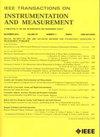Soft Fault Location and Imaging Using Residual Voltage Inversion in Cable Networks
IF 5.6
2区 工程技术
Q1 ENGINEERING, ELECTRICAL & ELECTRONIC
IEEE Transactions on Instrumentation and Measurement
Pub Date : 2025-02-14
DOI:10.1109/TIM.2025.3542111
引用次数: 0
Abstract
Locations and parameters monitoring for soft faults in a cable network is of importance to prevent hard faults at an early stage and maintain the stability of the power system. The existing fault detection methods often identify faults using the fixed parameters in a reference cable model to locate the faults. However, the changes of the reference model by faults bring model mismatch, for example, the signal propagation speed is different in the line-like soft faults. The model mismatch will lead to inaccurate fault location and not to mention parameter imaging for faults. To this end, this article proposes a residual voltage inversion (RVI) method to learn the model of the cable network with unknown faults. RVI uses the residual voltages, that is, the difference between the scattering voltages measured at the ports and those generated by the current model, as the gradient to update the multiple parameter distributions of the cable network iteratively. The learned model can then be used to calculate the precise location, imaging of the length, capacitance, and resistance for line-like soft faults. The simulation results show that RVI locates the range of line-like soft faults with an accuracy over 90%, and achieves insulation layer and core conductor imaging with accuracies larger than 95% and 80%, respectively. In addition, the experimental tests are carried out to verify the feasibility and performance of RVI.求助全文
约1分钟内获得全文
求助全文
来源期刊

IEEE Transactions on Instrumentation and Measurement
工程技术-工程:电子与电气
CiteScore
9.00
自引率
23.20%
发文量
1294
审稿时长
3.9 months
期刊介绍:
Papers are sought that address innovative solutions to the development and use of electrical and electronic instruments and equipment to measure, monitor and/or record physical phenomena for the purpose of advancing measurement science, methods, functionality and applications. The scope of these papers may encompass: (1) theory, methodology, and practice of measurement; (2) design, development and evaluation of instrumentation and measurement systems and components used in generating, acquiring, conditioning and processing signals; (3) analysis, representation, display, and preservation of the information obtained from a set of measurements; and (4) scientific and technical support to establishment and maintenance of technical standards in the field of Instrumentation and Measurement.
 求助内容:
求助内容: 应助结果提醒方式:
应助结果提醒方式:


